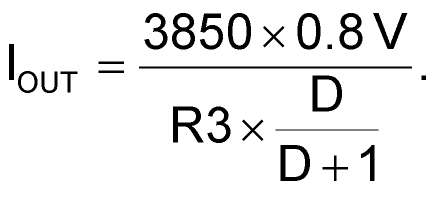Electronic Design
Opto-electronic systems frequently require temperature stabilization for components such as laser diodes, photodiodes, prisms, and lenses. The established method for providing stabilization is to attach a resistive temperature device (RTD) to the component to monitor its temperature and mount the component on top of a thermo-electrical cooler (TEC), using a specialized TEC controller IC to keep the component temperature at the setpoint. Often the setpoint is near room temperature, which usually means that the TEC controller must be able to supply positive and negative currents to provide for both cooling and heating.
Dedicated TEC controllers and drivers are available for this task, such as the LTC1923, ADN8831, MAX1968, and DRV592. But these devices may be expensive or need a substantial amount of external circuitry. Further, miniature TECs are preferable for handling small thermal loads such as lenses and photodiodes, but are a poor match for dedicated TEC controllers. The miniature TECs typically run at voltages of 2 V or less and currents at 1 A or less while the dedicated controllers are sized for much higher drive.
A much simpler TEC controller can be used in the many situations where it is possible to separate the task of heating from the task of cooling. For example, a component such as a laser diode requiring temperature stabilization may provide enough heat on its own to eliminate the need for the TEC as a heat source.
It may also be possible to provide adequate heating by using an ordinary surface-mount device (SMD) resistor glued between the TEC and the optical component. The resistor can then be connected to the pulse-width modulation (PWM) output of a microcontroller or FPGA via the drain of a power MOSFET, again eliminating the need for the TEC to provide heat.
If heating and cooling are separate tasks, control of the TEC simplifies considerably. Instead of sourcing both positive and negative currents, the controller only needs to be a one-quadrant current source. This brings the control task within the capability of a new kind of switching power-supply IC that has appeared on the market: the monolithic LED driver.
One type of LED driver that can also be used as a TEC driver is the LTC3454 from Linear Technology, called a “Torch/Flash LED Driver.” This device is designed to supply a constant current of up to 1 A to a single high-power LED. It contains a synchronous buck-boost converter, a constant-current control loop, and both soft-start and protection circuitry.
The LTC3454 differs from many other LED drivers in that it does not contain a safety circuit to shut down the device when the output voltage becomes too low, as would happen when the LED fails due to a short. Instead of a shut-down circuit, the LTC3454 contains a current limit circuit for shutting off its internal MOSFETs in case of a short.
This difference allows the LTC3454 to drive a TEC in place of an LED. Small TECs have a much lower voltage drop than LEDs, so most LED drivers would regard the TEC as a short and would activate their shut-down circuits. The LTC3454 operates normally with the TEC as its load.
The circuit for controlling the TEC is fairly simple (see the Figure 1). If configured for manual setpoint control (R1 connected to R2), it requires only a handful of parts. An alternative configuration (R1 connected to R3) allows active setpoint control via a PWM signal from a microprocessor or FPGA.
Manual setpoint control is useful when the thermal load is small so that a constant amount of cooling and a controlled amount of heating will keep the component temperature stable. The TEC current is then given by

A 20k potentiometer in series with 3k (R1 + R2) allows the driver to cover an output range from about 150 mA up to 1 A.
By steering the TEC current in response to the load with an optimized control loop, however, the circuit can run in such a way as to minimize total dissipated power. This active setpoint control process requires connection of a processor or FPGA pin to the gate of T1 carrying a PWM signal with a frequency of a few kilohertz or higher and a duty cycle of 0 to 100%. The output current through the TEC then depends on the duty cycle D, with

Because TECs have lower impedance than LEDs, the driver’s efficiency can be expected to be lower than the (quite good) values the datasheet provides for standard applications. To measure the efficiency, substitute a 2-Ω resistor for the TEC as a load. This value is roughly the impedance of miniature TECs such as the Ferrotec 9503/023/020M. Tests showed that at 300 mA the efficiency was 50%, rising to 70% at 500 mA and to 75% at 700 mA and above.
The efficiency can be improved. Because VIN >> VOUT, the LTC3454 is running solely in buck mode and, according to the datasheet, one of the IC’s internal switches is always ON. Making a connection between pins six (SW2) and seven (VOUT) shunts out the switch, which removes its resistance from the circuit. The improvement is considerable, with efficiency at 300 mA becoming 70%, rising to 77% at 500 mA and to 80% at 700 mA and above. All efficiences were measured at VIN = 5 V. At VIN = 3.3 V, the values were a few percent higher.

